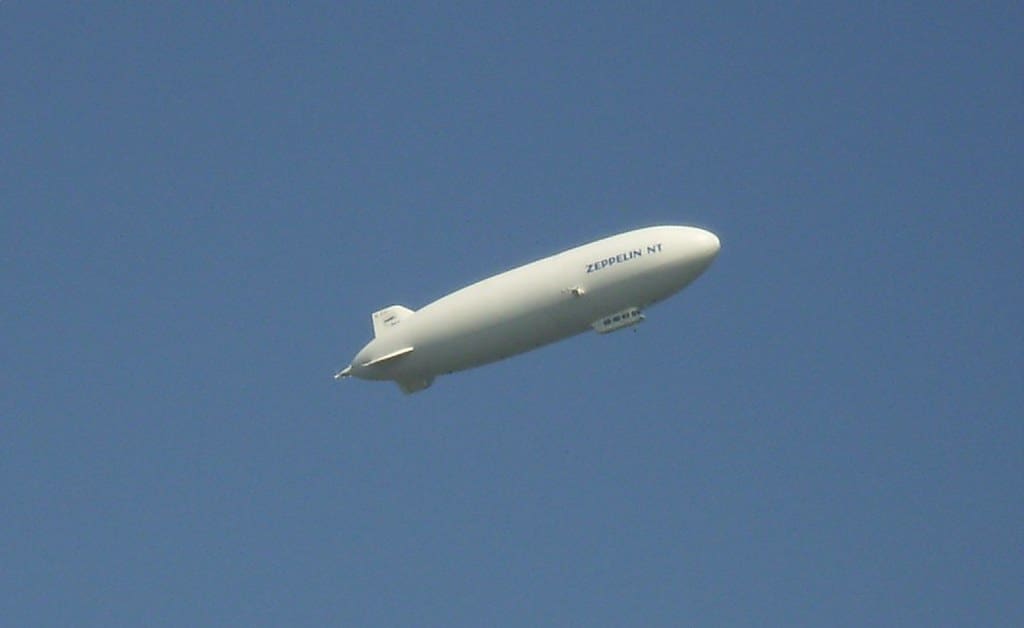Zeppelins and blimps are both aircraft. But they are different in terms of structure, shape, functioning, and other aspects. Even though they are, at present, impractical modes of transport, zeppelins and blimps were of great use in the past.
Key Takeaways
- Zeppelins have a rigid internal framework of lightweight metal, whereas blimps maintain their shape through pressure from the lifting gas.
- Blimps are smaller and easier to maneuver than zeppelins, making them more suitable for advertising and observation.
- Zeppelins offer a larger carrying capacity and longer range, making them more suitable for transportation and military applications.
Zeppelins vs Blimps
Zeppelins are airships which are light type aircraft that use gas, to gain lift, and are propelled using engines or propellers. They have a rigid framework made of metal. Blimps are non-rigid airships that have a flexible envelope and lack a rigid framework. They rely on gas to maintain their shape.

Zeppelins were used to traverse over the North Sea and the Baltic. The navy used most of the zeppelins for patrolling purposes. The Hindenburg incident marked the beginning of the dark days in airship history.
The origin of the name blimps is still ambiguous. They were used in the world war period and then for distributing advertising messages. The U.S. navy’s ZPG-3W is the largest blimp, and four such were made.
Comparison Table
| Parameters of Comparison | Zeppelins | Blimps |
|---|---|---|
| Invented by | Ferdinand von Zeppelin | Henri Giffard |
| Framework | Rigid or semi-rigid | Non-rigid |
| Manufacturers | Luftschiffbau Zeppelin GmbH | American Blimp Corporation (ABC) |
| First Flight | 1900 | 1852 |
| Use | Patrolling | Television coverage |
What is Zeppelins?
A zeppelin is an airship invented by Count Ferdinand von Zeppelin. It has a covered framework. The initial idea of the zeppelin was discussed in 1874, and it was completely developed in 1893.
Deutsche Luftschiffahrts- AG flew zeppelins for the first time in 1910, and over time thousands of flights were carried over. In the period of the first world war, the German military used these aircraft as bombers, which resulted in many deaths.
The duralumin framework enabled the expansion of space, unlike the non-rigid airships. The material used was kept a secret initially. The most famous zeppelins are the Graf Zeppelin and the Hindenburg zeppelin.
After the second world war, the airships were demolished. These aircraft were an inspiration for art, music, and literature. In the 1990s, the new technology zeppelins were developed.

What is Blimps?
Blimps are airships that are not rigid. They don’t have a framework. The pressure of the gas inside develops the strength to maintain the shape.
But the size limitation of blimps resulted in the formation of rigid aircraft. Although blimps are easier to transport, the unstable hull has caused a decrease in acceptance.
Nose cone battens strengthen the tip of the blimp, and there are air-filled bags called ballonets. Turbo-propeller airplane engines are used in blimps. The gondola is where the passengers and crew stay.
Pilots need a lot more training to fly an airship. The noteworthy airship crashes have contributed to popular neglect.

Main Differences Between Zeppelins and Blimps
- Zeppelins are of German origin and were invented by Count Ferdinand. Blimps were built by Henri Giffard.
- Blimps are now used for television coverage and research purposes. The last zeppelin was used in 1937.






